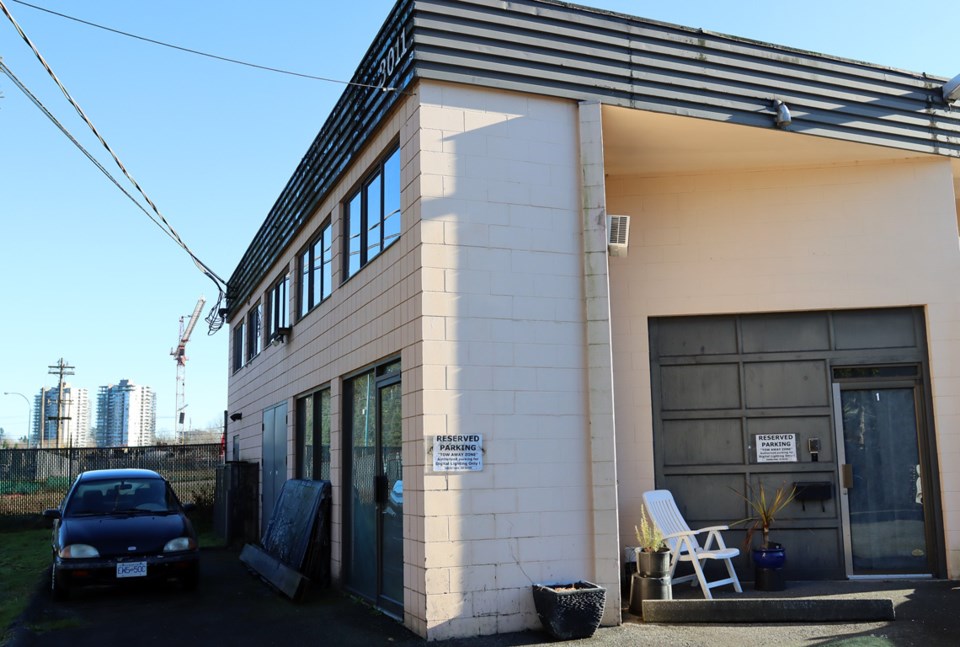Port Moody must work to intensify and optimize its existing industrial lands, says a report from Vann Struth Consulting Group discussed this week by the city’s strategic priorities committee.
According to the report, Port Moody has nearly 1.4 million sq. ft. of developed industrial floor space that accounts for about 1,400 jobs.
But the average building is 44 years old and floor area ratios are lower than current standards, meaning the city’s limited stock of industrial land is underutilized.
Without large tracts of available industrial land and ready transportation access, the city is unlikely to attract the kinds of big distribution and manufacturing businesses that are finding their way to cities like Port Coquitlam, Burnaby, Surrey and Chilliwack.
Instead, the report recommends that Port Moody pursue zoning strategies that allow more urban industrial development “with some combination of office, retail and light industrial, and may also contain residential uses on floors above,” especially along the Murray Street corridor and the neighbourhood around the Moody Centre SkyTrain station.
Urban industrial development is already happening along Murray Street, said the report, particularly in the stretch that includes Brewers Row, across from Rocky Point Park.
It could be further enhanced by increasing the ratio for accessory retail space to 50 per cent of floor area from the current 25 per cent.
As well, there’s an opportunity to encourage development of a complementary arts and entertainment area on Esplanade Avenue just west north of Murray and west of Rocky Point Park.
“This park-adjacent setting is well-suited to family entertainment uses and would provide a complement to the adult-focused craft breweries on the opposite side of Murray Street,” said the report. “A unique cultural area in Port Moody is developing here and should be encouraged.”
Vann Struth’s report also said the Moody Centre neighbourhood has the potential to become another Marine Gateway or False Creek Flats.
The former is in south Vancouver with residential towers of 29 and 38 storeys atop retail and office space around the Marine SkyTrain station while the latter is features midrise buildings of between seven and 11 storeys combining technology-focused office and retail spaces around the VCC-Clark SkyTrain station.
Other areas of Port Moody suitable for urban industrial development include the Clarke Street corridor and the northern end of Moray Street, above St. Johns Street, as well as properties immediately south of the former Reichhold Chemicals site that is now occupied by Polynt Coating.
The report said Port Moody has several advantages that would make a strategy of urban industrial development attractive, including a “favourable reputation and sense of identity in the region,” as well as rapid transit access and close proximity to desirable recreational and outdoor amenities for staff.
But the city must also overcome competitive disadvantages like high lease rates, the small size of vacant lots and uncertainty about the community’s acceptance of higher-density projects near SkyTrain.
“Those with experience with the Port Moody development process exhibit high frustration with lack of clarity, continual push for lower densities and unrealistic requirements,” said the report.
The city can work to ensure the economic health of its industrial lands with the help of several initiatives, including the creation of a clear approvals process for investment and development; expanding permitted light industrial uses and promoting the intensified use of existing properties working with the owners of existing industrial properties to identify emerging opportunities; exploring opportunities to create artist studio space in older, repurposed industrial buildings; aligning tax rates for light industrial properties with those for commercial properties; and investing in transportation improvements to make it easier for staff to commute and goods to move.



